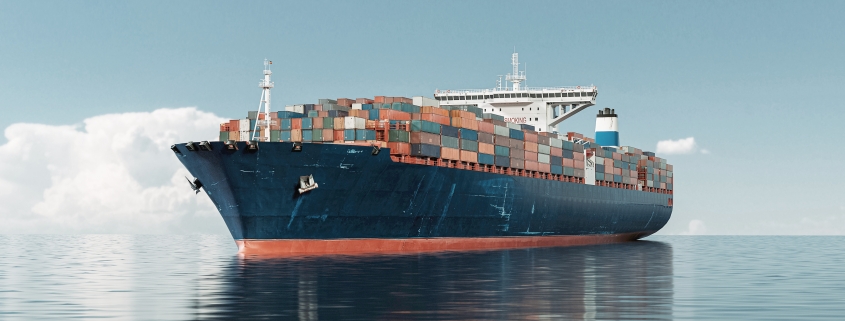What Role Does Automation Play in Modern Marine Vessels?
Automation technologies have fundamentally transformed the maritime industry by enhancing vessel capabilities, operational efficiency, and crew safety. Modern ship systems now leverage sophisticated software and hardware integration for functions ranging from navigation and engine management to maintenance monitoring and environmental compliance. These automated systems enable real-time data analysis, predictive maintenance, and enhanced decision-making capabilities while reducing operational costs and human error. The maritime sector continues to adopt increasingly advanced automation as a cornerstone of next-generation vessel design and operation.
What Role Does Automation Play in Modern Marine Vessels? A 2024 Overview
Marine automation encompasses the integration of advanced technologies, software systems, and hardware components that perform vessel operations with minimal human intervention. This technology has evolved dramatically over the past decade, transitioning from basic autopilot functions to comprehensive vessel management systems that control multiple aspects of maritime operations simultaneously.
Today’s automated maritime systems can monitor engine performance, optimize navigation routes, manage power distribution, and regulate environmental control systems throughout the vessel. The integration of sensors, actuators, and sophisticated control algorithms allows for unprecedented levels of operational awareness and responsiveness.
The maritime industry has embraced this technological revolution for several compelling reasons. Automated systems enhance navigational precision in challenging conditions, optimize fuel consumption through intelligent route planning, and provide early detection of potential mechanical issues before they develop into costly breakdowns. Additionally, these systems can operate continuously without fatigue, maintaining consistent performance standards that might otherwise be difficult for human crews to sustain over long voyages.
Companies like TKE Sweden AB are at the forefront of developing CAN-bus technology solutions that form the communication backbone of many vessel automation systems, enabling seamless integration of various components throughout modern ships.
How does automation improve safety on marine vessels?
Maritime automation significantly enhances vessel safety through multiple interconnected systems that work together to prevent accidents and mitigate risks. Advanced collision avoidance technologies represent one of the most important safety advancements in modern vessels, utilizing radar, AIS (Automatic Identification System), and sophisticated algorithms to detect potential collision scenarios and suggest optimal evasive maneuvers.
Automated monitoring systems continuously evaluate thousands of data points throughout the vessel, from engine parameters to structural integrity indicators. This comprehensive surveillance enables early detection of potential problems long before they would become apparent to human operators. For instance, vibration analysis can identify bearing wear in propulsion systems weeks before catastrophic failure might occur.
Emergency response capabilities have been revolutionized through automation, with systems that can automatically initiate damage control procedures within seconds of detecting issues like water ingress, fire, or power failures. These automated responses often include isolating affected areas, activating suppression systems, and alerting crew members with specific instructions for managing the situation.
The maritime industry has documented significant safety improvements attributable to automation. International Maritime Organization (IMO) data indicates that technology-assisted navigation and automated monitoring systems have contributed to the ongoing reduction in serious maritime incidents despite increasing global shipping traffic. These systems help overcome human limitations related to fatigue, distraction, and information processing during complex operations.
What are the economic benefits of vessel automation?
Vessel automation delivers substantial economic advantages that make it an increasingly essential investment for maritime operators. Perhaps the most immediately apparent benefit is fuel optimization, as automated systems continuously adjust vessel speed, trim, and route based on real-time weather conditions, current patterns, and cargo characteristics. These adjustments can typically reduce fuel consumption by 5-15% compared to vessels without such optimization.
Modern automated vessels can operate effectively with smaller crews, as many routine monitoring and adjustment tasks become automated. This workforce optimization reduces operational costs while allowing human crew members to focus on more complex decision-making and oversight functions that truly require human judgment.
Predictive maintenance represents another significant economic advantage of maritime automation. By continuously monitoring equipment performance and comparing it against expected parameters, systems can identify maintenance needs before failures occur. This approach typically extends equipment lifespan by 15-30% while reducing unplanned downtime that can cost thousands of dollars per hour for commercial vessels.
The return on investment for automation technologies varies depending on vessel type, operational profile, and specific systems implemented. However, industry analyses suggest that comprehensive automation systems generally achieve ROI within 2-4 years through combined savings from fuel efficiency, maintenance optimization, and improved operational capabilities.
For marine operators considering automation investments, fieldbus solutions like those provided by TKE Sweden AB offer an efficient pathway to integrate multiple vessel systems through standardized communication protocols, creating a foundation for comprehensive vessel automation.
Key Takeaways: The Future of Automation in Marine Vessels
The trajectory of maritime automation points toward increasingly autonomous capabilities, with significant developments on the horizon. We can expect to see greater integration of artificial intelligence for decision support, enabling more sophisticated predictive capabilities and adaptive responses to changing conditions. Remote monitoring and control capabilities will continue to expand, allowing shoreside operations centers to provide additional support and oversight for vessel operations.
Regulatory frameworks are evolving alongside these technological advances. The IMO continues to develop guidelines for autonomous vessel operations, while classification societies establish standards for automated systems certification. These evolving regulations will shape how new technologies can be implemented and certified for commercial use.
Companies specializing in maritime software and integration, including TKE Sweden AB with their expertise in CAN-bus technology, play a crucial role in this evolving landscape. Their ability to develop reliable communication networks that connect diverse vessel systems forms the foundation upon which more advanced automation can be built.
For maritime operators considering automation upgrades, a strategic approach is essential. Begin by identifying specific operational challenges that automation might address, then implement solutions incrementally, allowing for proper integration and crew familiarization. Partner with experienced technology providers who understand maritime-specific requirements and can design systems that meet both current needs and future expansion possibilities.
As the maritime industry continues to embrace automation technologies, vessels become safer, more efficient, and more environmentally sustainable. The integration of these systems represents not just a technological upgrade but a fundamental transformation in how maritime operations are conducted in the 21st century.
Interested in marine automation and control systems?
Browse our marine case studies to see how we support safe, efficient operations in harsh marine environments through smart CAN networking.



